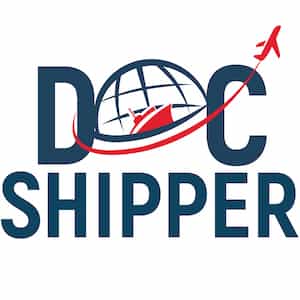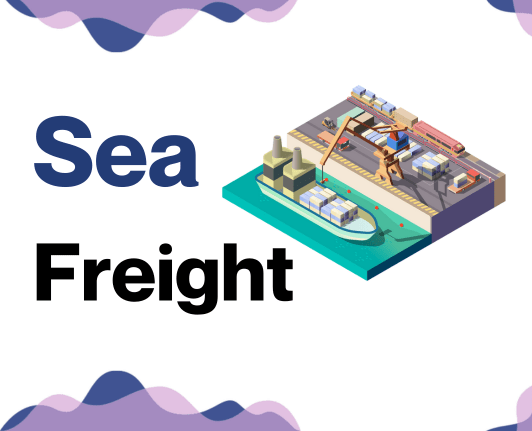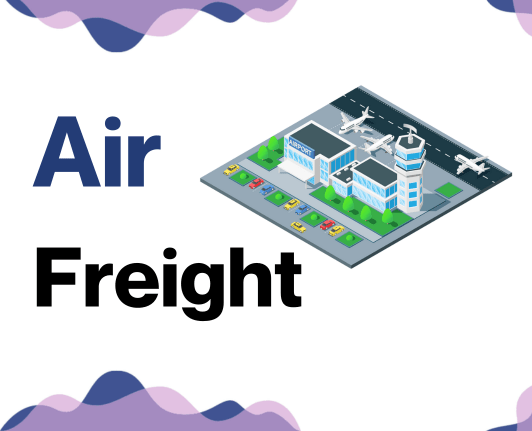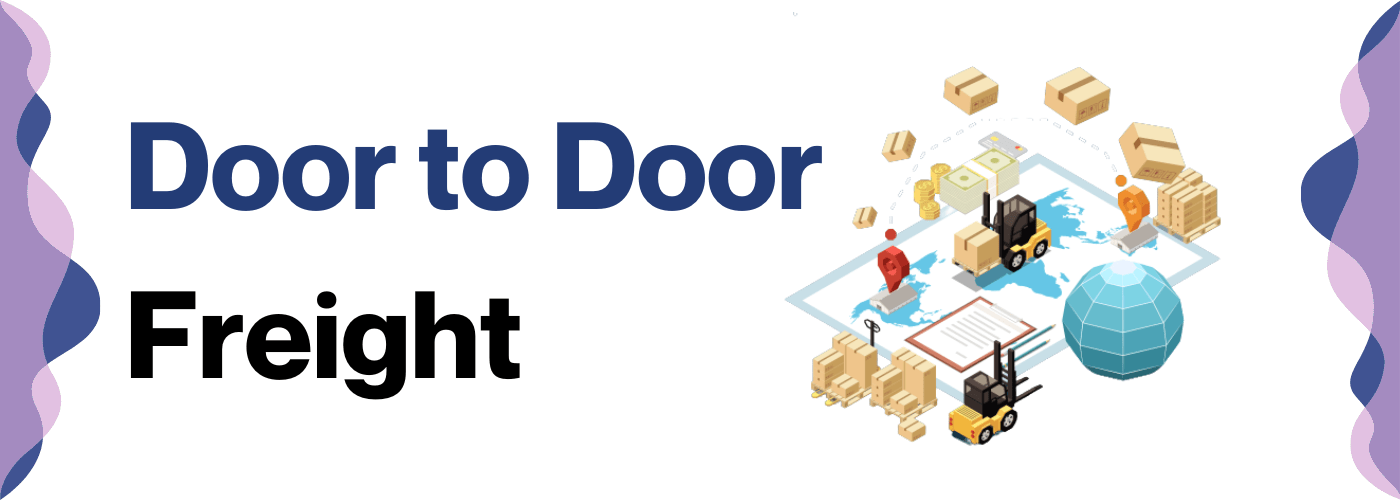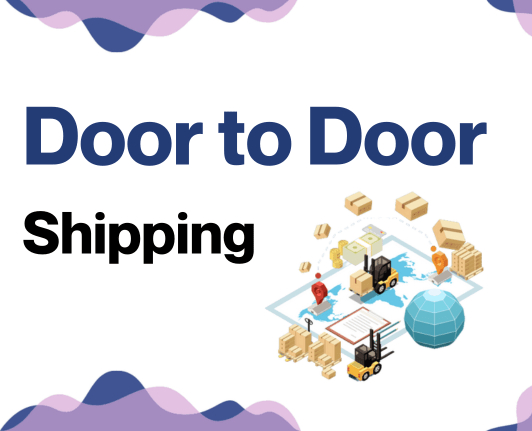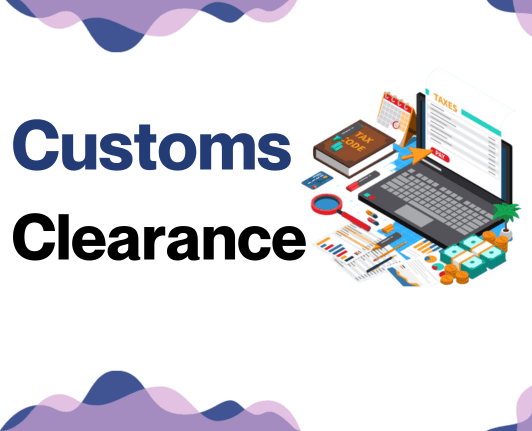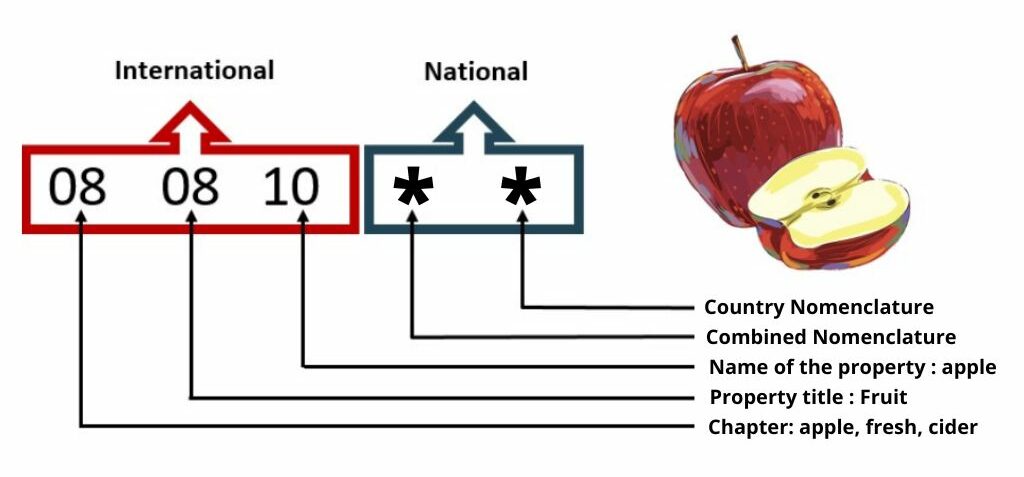If you thought finding good laksa in Budapest was tough, wait till you delve into freight transport between Malaysia and Hungary! This concrete labyrinth of rates, transit times, and custom regulations is enough to bog down even the most seasoned businesses. Within this guide, you'll unravel the enigma of fright transport across oceans, from the bustling ports of Penang to the cold wharfs of Budapest. We'll illuminate the ins and outs of air, sea, road, and rail freight, explain intricacies of customs clearance, break down duties and taxes, and provide essential advice tailored to help your business overcome logistical hurdles. If the process still feels overwhelming, let DocShipper handle it for you! Mastering international transport complexities is our speciality, and we're committed to turning your shipping challenges into business success stories.
Table of Contents
Which are the different modes of transportation between Malaysia and Hungary?
Shipping between Malaysia and Hungary? It's a journey much like a marathon run - long and riddled with hurdles. Being thousands of kilometers apart, the route slips across several countries and over diverse terrains. Road and rail might seem like a tough trek, like scaling Mount Everest without the right gear. That makes air and sea freight the knights in shining armor here. It's crucial to match your cargo needs to the best available method - it's like choosing the right running shoes for our marathon. Ultimately, the choice can turn your shipping experience from a Herculean task into an enjoyable sail.
How can DocShipper help?
Looking to ship goods from Malaysia to Hungary? DocShipper can establish a seamless supply chain for you. We handle all the heavy lifting – from material logistics to customs clearances. Got a query? Our consultants are always ready to help. Drop us a line now and receive a free cost estimate within 24 hours.
DocShipper Tip: Sea freight might be the best solution for you if:
- You're dealing with hefty quantities or oversized goods. Sea transport is your go-to for maximizing space without stretching your budget.
- Time sensitivity isn't a concern for your shipment. Ocean freight is known for its leisurely pace, especially when compared to the speed of air or rail.
- Your supply chain connects key international harbors. This positions you to take full advantage of a wide-reaching network of ocean trade routes.
Sea freight between Malaysia and Hungary
Malaysia and Hungary share a vibrant trade relation, buzzing with the ceaseless exchange of goods via ocean shipping. This constant nautical dance connects key industrial zones through major seaports like Port Klang in Malaysia and the Port of Budapest in Hungary. Embarking on this route, you may find sea freight appearing slow yet cost-effective, especially for high-volume shipments.
However, hang on tight! The story doesn't end at cost effectiveness. This journey has its share of choppy waters. Shippers often stumble into a maze of intricate regulations, misunderstanding labeling requirements, or the complexities of bill of lading – a crucial shipping document. Imagine them as puzzles that can frustrate even accomplished sea voyagers.
Don't panic, we are here with a compass and a map – or rather – best practices and precise specifications; they're like a seasoned ship captain guiding you through the oceans. So, lean back! Our deep-dive into the world of shipping between Malaysia and Hungary promises a smooth sailing, void of common pitfalls. Let's untangle these maritime knots together!
Main shipping ports in Malaysia
Port Klang
Location and Volume: Located on the west coast of Peninsular Malaysia, Port Klang plays a pivotal role in national and international trade, handling over 13 million TEU annually.
Key Trading Partners and Strategic Importance: It is a central hub for Malaysian trade with China, Singapore, the US, and Japan. Its strategic location, connecting the Malacca Strait and the South China Sea, contributes to its status as the 12th busiest port globally.
Context for Businesses: If you're planning eastern coastal shipments or trades with the aforementioned countries, incorporating Port Klang in your businesses logistics might be beneficial due to its ability to handle significant traffic and connect to crucial trade corridors.
Port of Tanjung Pelepas
Location and Volume: Situated at the eastern end of the busy Malacca Strait, the Port of Tanjung Pelepas is renowned for its competitively priced services. Handling over 9 million TEU annually, it's gaining momentum in the international shipping industry.
Key Trading Partners and Strategic Importance: Key trading routes include China, Hong Kong, Singapore, Taiwan, and South Korea. Tanjung Pelepas's strategic importance lies in its role as a preferred port for mega vessels owing to its nautical accessibility and efficient services.
Context for Businesses: If your shipping needs revolve around East Asian markets or large shipment volumes, the Port of Tanjung Pelepas positions itself as a highly efficient and affordable option, particularly for mega vessel transits.
Penang Port
Location and Volume: Penang Port, nestled on the northwest coast of Peninsular Malaysia, offers comprehensive port facilities and services. Shipping volumes amount to 1.9 million TEU annually, making it a smaller yet significant contributor to Malaysia's shipping industry.
Key Trading Partners and Strategic Importance: Key trading partners include Singapore, China, Hong Kong, India, and Japan. Benefiting from Malaysia's Free Commercial Zone status, the port facilitates and accelerates cargo customs clearance.
Context for Businesses: Companies venturing into the Asian markets or expecting fast customs clearance would find Penang Port supportive due to its Free Commercial Zone status coupled with a wide range of port facilities and services.
Johor Port
Location and Volume: Johor Port, located on the southern tip of Peninsular Malaysia, is the country's first multi-purpose port, handling 32.6 million freight weight tonnes annually.
Key Trading Partners and Strategic Importance: Top trade routes include Indonesia, Thailand, Singapore, China, and Australia. Its strategic location at the apex of important shipping routes in Asia adds to its importance.
Context for Businesses: If your operations involve multi-purpose freight, particularly within the Asian region, consider Johor Port. Its access to various shipping routes and versatility may augment your logistics efficiency.
Kuantan Port
Location and Volume: Kuantan Port, situated on the east coast of Peninsular Malaysia, is characterized by its deep-water facilities capable of handling bulk cargo volumes, managing 26.51 million freight weight tonnes annually.
Key Trading Partners and Strategic Importance: China stands as a prominent trading partner, with the port playing a pivotal role in the Malaysia-China Kuantan Industrial Park project.
Context for Businesses: Consider Kuantan Port, especially if your business requires deep-water facilities or if your trade is inclined towards China. Its capability of handling bulk cargo and ties with the China-Malaysia trade makes it a promising avenue.
Bintulu Port
Location and Volume: Bintulu Port, located on the central coast of Sarawak, is known for being a leading LNG exporter. Handling 37.38 million freight weight tonnes annually, this port is essential for energy-focused trades.
Key Trading Partners and Strategic Importance: Key trading partners revolve around the global energy markets, including Japan, South Korea, and Taiwan. It boasts the world's largest LNG production facility.
Context for Businesses: For businesses in energy-based industries, routing through Bintulu Port could provide remarkable advantages as it's equipped to deal with LNG traffic on a global scale.
Main shipping ports in Hungary
Port of Csepel
Location and Volume: The Port of Csepel is located in the southern district of Hungary's capital, Budapest, and is the most important and largest port in Hungary. It handles a shipping volume of 1.5 million tonnes of cargo annually.
Key Trading Partners and Strategic Importance: Germany, Austria, and Slovakia are some of its key trading partners. The strategic importance of this port lies in its comprehensive connections to the country's rail and road networks, allowing seamless transition from waterway to inland transport.
Context for Businesses: If you're looking to reach the landlocked Central and Eastern European markets, the Port of Csepel offers an essential gateway. Its central location and well-developed logistics services, including warehousing and distribution, enhances its suitability for businesses aiming to penetrate these markets.
Port of Baja
Location and Volume: Located on the left bank of the Danube, Port of Baja is the second largest port in Hungary. It handles over 500,000 tonnes of cargo annually.
Key Trading Partners and Strategic Importance: With considerable trading volume involving Germany, Austria, and Serbia, Port of Baja has gained strategic importance. It has specialized facilities for handling bulk and general cargo, specifically for the agriculture sector.
Context for Businesses: Considering the expansion of your business into the agricultural sector in Central and Eastern Europe, the Port of Baja is a strategic location. It provides quick shipment for agricultural cargo and inputs owing to its specialized facilities.
Location and Volume: Located at the southernmost point of Hungary, on the right bank of the Danube, the Port of Mohács is a key transport hub. It handles approximately 300,000 tonnes of cargo every year.
Key Trading Partners and Strategic Importance: Serbia, Croatia and further along Greece are the key trading partners. The port provides a free port status which can be beneficial for businesses.
Context for Businesses: Remove the hassle of custom duties and processes with the Port of Mohács's free port status. Also, it's a crucial transit post if you are shipping goods to or from Southeast Europe. Its free port status could provide the strategic advantage you need to streamline your logistics and reduce costs.
Should I choose FCL or LCL when shipping between Malaysia and Hungary?
Deciding how to ship your goods between Malaysia and Hungary comes down to two main sea freight options: Full Container Load (FCL) or Less-than Container Load (LCL), frequently referred to as consolidation. The decision is strategic, directly impacting cost, delivery time, and the ultimate effectiveness of your shipping process. Get ready to dive deep and understand these two options, equipping yourself to make an informed choice that best fits your specific shipping necessities. Let's unpack the differences and guide you to success in your international trade journey.
LCL: Less than Container Load
Definition: LCL or Less-than-Container Load is a shipping method where your goods are consolidated with other shipments, taking up only a fraction of the full container's space.
When to Use: If you're sending cargo volumes less than 13/14/15 cubic meters (CBM), LCL shipping is a better and cost-effective choice. Here, for instance, you do not need to wait to have enough goods to fill an entire container, offering more flexibility for low volume shipments.
Example: Let's suppose you're a Hungarian company importing specialized crafts from Malaysia. The orders aren't sizable, ranging around 11 CBM each time. With LCL shipment, you can facilitate frequent and affordable shipments instead of storing the goods until you amass enough for a full container.
Cost Implications: Using LCL freight also means sharing costs with other shippers. However, be mindful that the total cost depends on the LCL shipping quote, and also, there may also be additional charges for handling at the ports and during customs clearance.
FCL: Full Container Load
Definition: FCL (Full Container Load) shipping involves using an entire container exclusively for a single consignment. In simple terms, it's like renting a whole bus to transport your goods.
When to Use: FCL shipping becomes cost-efficient when your cargo volume is more than 13/14/15 CBM. Large goods, sensitive items, or high-value products often benefit from FCL because the container is sealed from origin to destination, limiting potential damages and ensuring safety.
Example: Let's say, for instance, a furniture company needs to transport bulk furniture from Malaysia to Hungary. As the cargo volume is likely high, choosing FCL would be logical, ensuring safety for their delicate goods.
Cost Implications: Though the initial FCL shipping quote might seem high, it's cheaper per unit for large volume shipments. If you'd filled a 20’ft container or a 40’ft container to capacity, the cost per CBM would be less in FCL, compared to LCL (Less than Container Load). Keep in mind, FCL container transportation also mitigates the risk of losing goods or facing delays due to mixed shipments. Thus, it's a wise option for businesses prioritizing volume, safety, and predictability.
Unlock hassle-free shipping
Streamline your Malaysia-Hungary shipments with DocShipper! Our freight forwarding expertise eliminates complexities in your cargo shipping. Whether considering consolidation for smaller shipments or a full container for larger ones, trust in our ocean freight experts who assess volume, budget, and shipping time to recommend your best solution. Let's simplify your international trade, answer your queries, and show you how better logistics can boost your business's bottom line. Contact us now for a free estimation!
How long does sea freight take between Malaysia and Hungary?
On average, sea freight shipping between Malaysia and Hungary takes roughly a period of 20 to 30 days. This duration isn't a constant, subject to factors ranging from the specific Malaysian and Hungarian ports incorporated in the freight route, to the weight and type of goods being transported. It's always worth having a chat with your freight forwarder, say DocShipper, who can provide a precise quote, tailored to your unique circumstances and shipping requirements.
Take a look at the average transit times for shipping containers between the main freight ports in both countries:
| Malaysian Ports | Hungarian Ports | Average Transit Time (Days) |
| Port Klang | Port of Budapest | 24 |
| Penang Port | Port of Budapest | 26 |
| Johor Port | Port of Budapest | 30 |
| Kuantan Port | Port of Budapest | 22 |
Note: Hungary has only one main freight port - the Port of Budapest.
How much does it cost to ship a container between Malaysia and Hungary?
Unlocking the mystery of container shipping costs between Malaysia and Hungary? Ocean freight rates vary widely, anywhere from $50 to $500 per CBM, but rest easy because nailing a precise figure is like hitting a moving target. Factors like Points of Loading and Destination, carrier choice, nature of goods, and monthly market fluctuations all play a role in varying the shipping cost. But no need to weather this storm alone – our seasoned shipping specialists deliver personalized, competitive quotes on a case-by-case basis. Tailored to your unique needs, we've got you covered during this seafaring journey.
Special transportation services
Out of Gauge (OOG) Container
Definition: An OOG container is a special type of shipping container designed for cargo that doesn't fit into a standard container due to its size. This makes OOG suitable for transporting out of gauge cargo.
Suitable for: OOG containers are perfect for moving large items like machinery, industrial parts, construction materials, and other oversized loads.
Examples: Suppose your business manufactures agricultural machinery in Malaysia and needs to export these oversized items to Hungary. An OOG container can accommodate the excess width, height, or length of your goods without any issue.
Why it might be the best choice for you: If your business deals with large, non-standard sized items, an OOG container provides the space you need whilst ensuring secure handling and protection during shipping.
Break Bulk
Definition: Break bulk refers to shipping cargo as separate, individual units rather than in containers. These units are then commonly loaded onto pallets or into sacks for shipping.
Suitable for: Break bulk shipping is ideal for goods that are too large, heavy, or awkwardly shaped to fit into regular containers – such as generators, turbines, or helicopters.
Examples: If, for instance, you're a Hungarian business importing large mining equipment parts from Malaysia, break bulk would be a good option.
Why it might be the best choice for you: If your products are not container-friendly, break bulk shipping offers the flexibility needed to ensure your cargo reaches its destination safely.
Dry Bulk
Definition: Dry bulk involves the shipping of loose cargo loaded directly into the vessel's hold and is frequently used for commodities like grain, coal, or gravel.
Suitable for: It's invaluable for shipments of raw goods or materials in large quantities, allowing for overall less handling and thus decreased risk of damage.
Examples: If you're a Hungarian company importing large volumes of rice from Malaysia, dry bulk could be your best option.
Why it might be the best choice for you: Dry bulk shipping is the way to go if you're dealing with large volumes of loose, dry goods as it maximizes utility and cuts down on costs.
Roll-on/Roll-off (Ro-Ro)
Definition: In the ro-ro shipping method, vehicles are driven directly onto a ro-ro vessel, shipped across the sea, and then driven off at the destination port.
Suitable for: Ideal for carrying wheeled cargo such as cars, semi-trailer trucks, trailers, or railroad cars.
Examples: A car manufacturer in Hungary might use roll-on/roll-off shipping to import a batch of vehicles constructed in Malaysia.
Why it might be the best choice for you: If your cargo is wheeled and self-propelled, Ro-Ro shipping is a quick, efficient, and safe choice.
Reefer Containers
Definition: Reefer containers are refrigerated shipping containers used for transporting temperature-sensitive cargo.
Suitable for: A must for businesses shipping perishable goods like fruits, vegetables, dairy products, or pharmaceutical items.
Examples: A seafood exporter in Malaysia exporting fresh catch to Hungary would benefit from reefer container shipping to maintain the freshness and quality of their product.
Why it might be the best choice for you: If your products require temperature-controlled transportation, then reefer containers can provide the necessary conditions to ensure your goods arrive just as they left, regardless of the journey length or outside conditions.
Understanding the right shipping method for your products can make a world of difference. If you're unsure which is the best fit for your business, we at DocShipper are here to help. Don't hesitate to contact us for a free shipping quote in less than 24 hours.
DocShipper Tip: Air freight might be the best solution for you if:
- You're pressed for time or facing a non-negotiable deadline. Air freight delivers unparalleled speed when it comes to transit times.
- Your shipment is modest in size, falling under 2 CBM. Air freight is particularly well-suited for these smaller consignments.
- Your supply chain includes destinations that are off the beaten maritime or rail paths. Air freight gives you access to a comprehensive global airport network.
Air freight between Malaysia and Hungary
When you need to ship delicate electronics or invaluable antiques from Malaysia to Hungary, air freight becomes your best pal. It's swift and reliable, perfect for those tiny, precious cargoes that leave a big hole in the wallet if they don't arrive in time. However, here's the twist. Some shippers trip over their own feet. They miscalculate freight charges by not accurately evaluating the weight of their shipments (remember, it's not just about kilograms but volume too!). Or they overlook best practices that could prevent heartache later. Just like how a pen might seem insignificant, but can make all the difference during an exam, knowing these nuances can save your day (and your money)!
Air Cargo vs Express Air Freight: How should I ship?
If your business is puzzling over the right choice between Air Cargo and Express Air Freight for your Malaysia-Hungary shipments, you've come to the right place. Imagine Air Cargo as a shared ride in an airline with other packages whereas Express Air Freight is like your dedicated private jet, ready to speed your goods directly to Hungary. Let's dive into the nuts and bolts of these two options to help you make the best decision.
Should I choose Air Cargo between Malaysia and Hungary?
If shipping between Malaysia and Hungary, Air cargo could be your ideal choice. It's reliable and cost-effective, especially with prominent international airlines such as Malaysia Airlines and Wizz Air. Remember, while air freight is quick, fixed schedules may lead to longer transit times. Particularly, above 100/150kg (220/330lbs), this option becomes more attractive. Balancing your budget and delivery timelines wisely, air cargo can adequately solve your shipping needs.
Should I choose Express Air Freight between Malaysia and Hungary?
If your shipment to Hungary from Malaysia weighs under 1 CBM or 100/150 kg (220/330 lbs), consider Express Air Freight. This specialized service uses dedicated cargo planes, excluding passengers, to expedite your goods. It's ideal for smaller, time-sensitive consignments. Leading providers such as FedEx, UPS, and DHL offer these services. Choosing Express Air Freight means prioritizing speed and reliability for your business's crucial shipments.
Main international airports in Malaysia
Kuala Lumpur International Airport (KLIA)
Cargo Volume: Approximately 820,000 metric tons annually
Key Trading Partners: China, U.S., Japan, Europe, India
Strategic Importance: As Malaysia's main international airport, KLIA is located strategically in the capital, making it the busiest airport in terms of cargo traffic.
Notable Features: KLIA spans over 100 square kilometers, hosts a Free Commercial Zone, and has direct cargo flights to more than 60 countries worldwide.
For Your Business: With its Free Commercial Zone offering fiscal incentives and KLIA's wide connectivity, it may benefit you greatly if your operations have a wide geographical scope.
Penang International Airport (PEN)
Cargo Volume: Over 360,000 metric tons annually
Key Trading Partners: U.S., China, Japan, Europe
Strategic Importance: An important gateway to northern Malaysia, PEN gives businesses access to several important economic regions.
Notable Features: PEN is considered a hub of cargo movement in northern Malaysia and directly connects to more than 12 countries.
For Your Business: If your enterprise deals in high-tech industries or exports goods to northern Malaysia, PEN's specialized logistics features could be a boon.
Sultan Abdul Aziz Shah Airport (SZB)
Cargo Volume: Not publicly listed, but it is well-equipped to handle cargo shipments.
Key Trading Partners: Primarily domestic and regional partners within Southeast Asia.
Strategic Importance: SZB serves as a supporting airport to KLIA and caters to low-cost carriers and cargo traffic.
Notable Features: With modern cargo facilities, it is a strategic location for flights to Southeast Asian markets.
For Your Business: If your shipment routes include smaller Southeast Asian markets, consider SZB for efficient and cost-effective options.
Senai International Airport (JHB)
Cargo Volume: Over 61,000 metric tons annually
Key Trading Partners: Singapore, China, Japan, Europe
Strategic Importance: JHB plays a crucial role in the Iskandar Malaysia development region, serving industrial and cargo needs.
Notable Features: JHB is adjacent to several major expressways, granting easy freight access to neighboring countries.
For Your Business: If you operate in or around the Iskandar development region, leveraging JHB could streamline your logistics processes.
Kuching International Airport (KCH)
Cargo Volume: Approximately 23,000 metric tons annually
Key Trading Partners: Domestic routes and ASEAN countries.
Strategic Importance: KCH provides access to the Borneo region, serving a crucial role in domestic and regional logistics.
Notable Features: The airport is well-facilitated to handle domestic and regional freight.
For Your Business: If you're targeting East Malaysia or Borneo, KCH could serve as your primary gateway and simplify your operations.
Main international airports in Hungary
Budapest Ferenc Liszt International Airport
Cargo Volume: Budapest Airport handled over 100,000 tonnes of air freight in 2020 despite the global pandemic, showing resilience and potential for growth.
Key Trading Partners: Germany, China, USA, and Middle East countries are the primary trading partners.
Strategic Importance: It is situated in the heart of Central Europe, serving as a vital transit hub between Eastern and Western Europe. It's Hungary's largest airport, offering you access to a wide variety of airlines and routes.
Notable Features: The airport has dedicated cargo infrastructure including two cargo terminals and a 'Cargo City'. It operates 24/7 and handles various types of air freight including dangerous goods and live animals.
For Your Business: If you're shipping to or from Central Europe, the Budapest Ferenc Liszt International Airport offers promising supply chain connectivity. The variety of transported goods and steady cargo traffic can ensure smooth transit for your merchandise.
Debrecen International Airport
Cargo Volume: Less busy than Budapest, Debrecen airport handles several thousand tons of cargo per year.
Key Trading Partners: Main trading partners include countries in the European Union, with frequent flights to and from the UK, German, Italy and France.
Strategic Importance: This airport is strategically located in Eastern Hungary, providing an alternative gateway to access Eastern European markets.
Notable Features: It is equipped to handle different types of air freight and offers cargo storage facilities.
For Your Business: If your trade relations are more towards Eastern Europe, Debrecen International Airport could be an efficient choice, potentially avoiding congestion and delays at larger airports.
How long does air freight take between Malaysia and Hungary?
The average air freight shipping duration between Malaysia and Hungary will typically take about 3 to 7 days. However, it's crucial to note that this estimate isn't set in stone. Factors such as the specific airports in question, the weight of your cargo, and the nature of your goods can influence the actual transit time. This underscores the importance of a customized quote from a freight forwarder like DocShipper for precise timelines that mirror your unique shipping needs.
How much does it cost to ship a parcel between Malaysia and Hungary with air freight?
Shipping air freight between Malaysia and Hungary ranges widely, averaging around $2 to $6 per kg. Pinpointing an exact cost becomes tricky due to factors like the distance from departure and arrival airports, package dimensions, weight, and nature of goods. Rest assured, our team meticulously evaluates these parameters to give you the most competitive rates. Every quote is custom-made to fit your distinct needs. To find out more, contact us and receive a free quote in less than 24 hours.
What is the difference between volumetric and gross weight?
Gross weight refers to the actual weight of your shipment, including packaging and pallets. Think of it as popping your fully-packed suitcase on a scale before your flight.
Volumetric weight, on the contrary, takes into account the space a package occupies on an aircraft rather than just the physical weight. This means a large, lightweight box could cost more to ship than a smaller, heavier item!
Let's do some math now. In Air cargo, volumetric weight is calculated by multiplying the length, width, and height of the package in centimeters, then dividing by 6000. Suppose you have a box that is 40cm x 30cm x 20cm. Its volumetric weight is (40 x 30 x 20) / 6000 = 4 kgs (or 8.82 lbs).
To figure out the gross weight, you just need to pop it on a scale. If that box weighs 5 kgs (or 11.02 lbs), then that’s your gross weight.
In Express Air Freight, the divisor changes from 6000 to 5000, making volumetric weight relatively higher. The same package would weigh (40 x 30 x 20) / 5000 = 4.8 kgs (or 10.58 lbs) in volumetric terms.
Curious why all these figures matter? Well, freight charges depend on this. You’ll pay for whichever weight is higher - gross or volumetric. It ensures every bit of space and weight on a flight is monetized effectively, hence helping to maintain a balance between size and cost in air freight shipping.
DocShipper tip: Door to Door might be the best solution for you if:
- You value convenience and want a seamless shipping process, as door-to-door takes care of every step from pickup to delivery.
- You prefer a single point of contact, as door-to-door services typically provide a dedicated agent to handle all aspects of the shipment.
- You want to minimize the handling of your goods, reducing the risk of damage or loss, as door-to-door minimizes transitions between different modes of transport.
Door to door between Malaysia and Hungary
Unfamiliar with international Door to Door shipping? It's a seamless, fuss-free method where your shipment is picked up from Malaysia and delivered right to Hungary's doorstep. Its key benefit: utmost convenience, making it a popular choice for many businesses. Intrigued by the simplicity and efficiency? Let's dive in.
Overview – Door to Door
Understanding the intricacies of shipping from Malaysia to Hungary can be a daunting task. With diverse customs regulations and multiple handling points, it can quickly become overwhelming. However, door to door shipping simplifies this journey. A trusted solution, it guarantees that your goods move from origin to destination with hand-picked carriers, managed customs clearance, and lower risks. Despite potentially higher costs, it's DocShipper's most popular service, praised for providing peace of mind and ease. Take advantage of this stress-free logistics solution and say goodbye to the complexities.
Why should I use a Door to Door service between Malaysia and Hungary?
Who doesn't love a worry-free solution wrapped up in a neat package? Now, imagine shipping your goods from Malaysia to Hungary with the same ease - that's Door to Door service for you. Here, we detail five benefits it offers that could make it your go-to choice:
1. Stress-free Logistics: All logistics management from pickup at the origin to delivery at the destination is dealt with for you. No more scratching your head over paperwork or administrative formalities.
2. Timely Deliveries: For those 'Beat the Clock' moments, Door to Door service is a boon. With meticulous coordination and planning, the service ensures your urgent shipments reach exactly when they’re needed - no last-minute panics!
3. Specialised Care: Got complex or fragile cargo? Fear not! Door to Door offers the specialized handling it needs ensuring it's treated with utmost care and delivered intact.
4. Convenience: Imagine not having to worry about arranging for last-leg trucking at the destination. Door to Door takes care of it all, making it a truly convenient option.
5. Seamless Experience: Finally, the overriding reason - a seamless, hassle-free shipping experience. All you do is prepare the goods; all your stress is taken care of, even across international borders!
So, whether you're shipping household items or catering to commercial needs, Door to Door service could save you a lot of wrinkle lines and allows you to focus on what you do best - your business.
DocShipper – Door to Door specialist between Malaysia and Hungary
Experience hassle-free, door-to-door shipping from Malaysia to Hungary with DocShipper. Trust in our expertise to manage every aspect of the process - from packing and transport, to customs clearance using all shipping methods. Enjoy the convenience of a dedicated Account Executive who oversees your shipping needs. Reach out for a free estimate within 24 hours or consult with our specialists at no cost. Let us handle the complexities, while you focus on your business.
Customs clearance in Hungary for goods imported from Malaysia
Customs clearance, the necessary process of meeting the legal requirements to import goods from one country to another, can be highly complex, especially when moving goods from Malaysia to Hungary. Tricky complications like unexpected expenses and specific duties, taxes, and quotas can pose serious risks, potentially resulting in your shipment getting stuck in transit. It’s also crucial to be aware of mandatory licenses. Rest assured, this guide will delve into all these areas, illuminating the comprehensive customs clearance procedure to equip you for this venture. Remember, DocShipper offers full support—whether you’re shipping textiles, machinery, or exotic fruits worldwide. Ready to move forward? Our team will provide an estimate to help you budget your project. Just let us know the origin of your goods, their value, and the HS Code. These details are necessary for an accurate cost forecast and streamlining the process.
How to calculate duties & taxes when importing from Malaysia to Hungary?
Understanding how to estimate duties and taxes when moving goods from Malaysia to Hungary is a fundamental part of the shipping process. It might initially seem daunting, but once you grasp the basics, it becomes more manageable. The first requirement is to identify the country in which your goods were produced or manufactured. While it seems straightforward, this is a highly significant aspect, as it forms the basis for your calculations.
To accurately estimate the customs duties, you need to arm yourself with certain key pieces of information. This includes the HS (Harmonized System) Code, which classifies traded products globally, and the Customs Value, which pertains to the cost of your product. The duties themselves depend on the Applicable Tariff Rate for the specific product being moved. Also, keep in mind that there may be additional taxes or fees specific to the product in question.
Diving in, the first step is to clearly identify the country of origin, which refers to where your goods have been manufactured or produced. Emphasizing this is crucial, as it can have a substantial impact on the amount of duties and taxes imposed on your shipment. By accurately identifying the country of origin - in this case, Malaysia - you set a clear path for computing the other elements of your customs duties.
Step 1 - Identify the Country of Origin
Understanding your goods' Country of Origin is paramount. Here’s why. First, it determines the Harmonized System (HS) code, key to calculating duties. Second, it exposes potential trade agreements between countries, which can impact duties. Third, it’s pivotal to understand import restrictions specific to the origin country. Fourth, knowing the origin can reveal opportunities for duty reduction. Fifth, it assists in tackling any unexpected bureaucratic hurdles.
Between Malaysia and Hungary, consider the EU-Malaysia Framework Agreement, which aims to liberalize trade, affecting your product's customs duties. Some goods may have reduced or zero tariff rates, while others may face standard tariffs due to this agreement.
As for import restrictions, certain goods such as military equipment, certain chemicals, and some agricultural products have special rules when imported from Malaysia.
In practice, always confirm your product's country of origin before getting your HS code. You could be paying more than necessary or violating import rules unintentionally. Solid prep work saves you both stress and money!
Step 2 - Find the HS Code of your product
The Harmonized System, or HS, is an international nomenclature for the classification of products used by customs. It allows participating countries to classify traded goods on a common basis for customs purposes. Your product's HS code is crucial as it will determine the tariffs, documentation, and regulations that apply to your specific product.
Typically, it's most effective to ask your supplier for the HS code of your products. They usually have a thorough understanding of the items they're dealing with and the associated international customs regulations.
But in case you need to find out the HS code on your own, we've got you covered. First, head on over to the Harmonized Tariff Schedule. There, type the name of your product into the provided search bar. Once you hit 'search', look for the code in the Heading/Subheading column. Each step in this process is vital and should be followed sequentially to ensure you get an accurate result.
Note: Accuracy is paramount when you're determining your product's HS code. Any inaccuracies could lead to unwelcome delays and potentially even monetary fines, so be sure to double-check your code to confirm it's correct.
Here's an infographic showing you how to read an HS code. It may serve you well to understand and properly use these codes in your international shipping endeavors.
Step 3 - Calculate the Customs Value
Unpacking customs value might seem like an uphill task, but it's simpler than you might think. It's not identical to product value - there's more to the equation. Picture this: you're importing 100 designer bags from Malaysia to Hungary. Your supplier sets the price at $20,000 USD. However, the customs value will not just be the product cost. It's calculated based on the CIF value - the sum of the cost of the products, the international shipping fee, and the insurance cost. So, if your international shipping costs $2000 USD and insurance is another $500 USD, the customs value would be $22,500 USD ($20,000 + $2,000 + $500). This value is integral in determining your customs duties and taxes. By understanding how this calculation works, you can avoid unexpected costs and better manage your business budgeting.
Step 4 - Figure out the applicable Import Tariff
Import Tariffs are taxes imposed on imported goods and vary depending on the product's classification code (HS Code) and its origin. As Hungary is part of the European Union, the import tariff can be determined through the TARIC System - European Customs.
To illustrate, let's take an example of a simple product, a metal chair, imported from Malaysia with the HS code 940179.
1. Visit the TARIC Consultation Tool and enter the HS code '940179' from Malaysia to get the tariff details.
2. Check the duties and taxes applied to this product. For instance, the base tariff rate might be 3%.
Now let's incorporate Cost, Insurance, and Freight (CIF). Assume CIF costs amount to $1000.
The formula to calculate the import duties is:
Import Duties = (CIF Value x Import Tariff)/100
For our chair, the duties would be = ($1000 x 3)/100 = $30
Thus, these are the import duties to be paid to the customs authorities in Hungary for importing a metal chair from Malaysia. Remember, changes in trade agreements or policy can affect these rates.
Step 5 - Consider other Import Duties and Taxes
When shipping goods from Malaysia to Hungary, besides the standard tariff rate, you may encounter various additional duties depending on the product and the origin. Let's break these down.
Firstly, excise duty is a tax levied on specific goods, such as alcohol or tobacco.
Secondly, anti-dumping taxes are imposed if goods are sold significantly below market value, usually to tackle unfair trade practices.
Lastly, and perhaps most significantly, you will face Value Added Tax, VAT. Hungary, being part of the European Union, charges a standard VAT rate that you should consider as part of your overall costing.
For example, if your shipment is worth $10,000, and the standard tariff rate is 4.5%, the excise duty is 10%, and the VAT is 27% (the standard rate in Hungary), your total expenses might look something like this:
Import duties = $10,000 4.5% = $450
Excise duty = $10,000 10% = $1,000
VAT = ($10,000 + $450 + $1,000) 27% = $3,192
Total cost = $10,000 + $450 + $1,000 + $3,192 = $14,642
Remember, these rates can vary and this example is provided for illustrative purposes only. Always check the most recent rates when planning your shipment.
Step 6 - Calculate the Customs Duties
In Step 6, you'll learn how to calculate Customs Duties when importing goods from Malaysia to Hungary. Use the formula: Customs Value = (cost of goods + shipping + insurance) x Customs Duty Rate.
Example 1: If you import goods costing $1000 with $200 shipping and insurance, but there's no VAT, your customs duty (given a 10% duty rate) would be ($1000 + $200) x 10% = $120.
Example 2: Let's add VAT. Hungary charges 27% VAT. The calculation would be: ($1000 + $200 + $120) x 27% = $356.4. Your total is $120 (Customs Duty) + $356.4 (VAT) = $476.4
Example 3: Consider both VAT and Anti-Dumping Taxes (say, 15%) and Excise Duty of 5%. Your total costs would be $120 (customs duty) + $356.4 (VAT) + $180 (Anti-Dumping) + $70 (Excise Duty) = $726.4
Ensuring you properly calculate these charges can be a complex task – that's where DocShipper comes in. We manage every step of customs clearance worldwide, guaranteeing you never pay more than necessary. Contact us, and you’ll receive a free quote within 24 hours. It’s your hassle-free solution to global shipping.
Does DocShipper charge customs fees?
Understandably, you might be wondering about DocShipper's role in handling customs fees. As a customs broker in Malaysia and Hungary, we handle all the customs paperwork, but we don't impose any customs duties. These duties and taxes are levied by the government, not us. There's a clear distinction—our service is to manage the customs clearance process for a fee, but the actual customs charges go straight to the government. Plus, you'll receive official documents from the customs office, ensuring transparency; you only pay what the customs office charges.
Contact Details for Customs Authorities
Malaysia Customs
Official name: Royal Malaysian Customs Department
Official website: https://www.customs.gov.my/en
Hungary Customs
Official name: National Tax and Customs Administration of Hungary
Official website: https://en.nav.gov.hu/
Required documents for customs clearance
Baffled by bills of lading or perturbed by packing lists? This section simplifies customs clearance for you, dissecting vital documents like the Bill of Lading, Packing List, Certificate of Origin, and Documents of Conformity (CE standard). Equip yourself with this knowledge to ace your shipping journey. Let's reduce those paperwork-induced headaches, shall we?
Bill of Lading
Navigating cargo shipment from Malaysia to Hungary? Your key to transitional ownership is the Bill of Lading, one trusty document setting sail with your goods. It's a contract between you, the shipper, and the carrier, spelling out the terms of conveyance, including details about your cargo and destination. While hard copies are still in use, the world's paving a greener path - electronic or 'telex' releases. These digital versions expedite processes, easing the tangle of paperwork, a boon for tight deadlines. Remember, the sea isn't the only way; the skies call too. When shipping air cargo, your airway bill (AWB) is akin to the Bill of Lading, but it never changes ownership. Take note of these crucial documents to keep your cargo moving smoothly, ensuring your business thrives in a global market.
Packing List
Navigating customs from Malaysia to Hungary? The Packing List is a lifeline you can't afford to overlook. This document, listing every item in your shipment with precise detail, is a shipper's responsibility to create. Whether you choose the sea or jet streams, the accuracy of your Packing List is non-negotiable. Imagine shipping machinery parts - a minor mix-up in piece count could snowball into unnecessary delays, possibly fines. Customs officials depend on this document to validate your shipment's contents. So, when drafting your Packing List, accuracy is key to avoiding any hiccups at customs clearance. Remember, your smooth shipping experience hinges on this vital paper trail!
Commercial Invoice
Shipping between Malaysia and Hungary? A solid Commercial Invoice is key! This document details the transaction between you, the exporter, and the importer. Including exact descriptions of the goods, their value, shipping details and your business details. Since it serves as the ledger for your shipment, ensure all information aligns with other shipping documents to avoid customs hiccups. Like saying you're shipping 100 computer parts, whereas the packing list states 120. Long story short, an accurate Commercial Invoice expedites customs clearance and keeps your delivery on track. Make sure it's your first priority!
Certificate of Origin
Are you shipping goods from Malaysia to Hungary? If so, don't overlook the Certificate of Origin (CoO). This crucial document tells customs where your products were made. For example, if you're exporting electronic components manufactured in Kuala Lumpur, your CoO proves their Malaysian origin. Not only does this maintain supply chain transparency, but it could also trigger preferential duty rates, allowing you to save on costs. Therefore, always ensure the country of manufacture is clearly stated on your CoO. It's like a passport for your goods, proving their legitimacy and smoothing their journey across borders.
Certificate of Conformity (CE standard)
When shipping from Malaysia to Hungary, the Certificate of Conformity (CE standard) is vital. This emblem signals that your goods comply with the health, safety, and environmental requirements listed under European policy, allowing them to move freely within the Hungarian and overall European market. It differs from quality assurance as it represents legal compliance, not necessarily product quality. In the US, similar standards like FCC or UL serve this purpose. Always ensure your products carry the CE mark; otherwise, your shipment could face unnecessary delays or even rejection at Hungarian customs. As an actionable insight: double-check your goods for compliance before arranging shipment to avoid any transportation hiccups.
Your EORI number (Economic Operator Registration Identification)
If you're shipping between Malaysia and Hungary, secure an EORI number is vital. This unique identifier helps track your goods as they move within EU borders. Don't look puzzled, you see, as Hungary is an EU member, your shipments wouldn’t pass through customs without it. Registering might feel like traversing a labyrinth but stay cool! Start by applying for VAT registration, then go straight to your country's relevant authority website and follow instructions clearly laid down. Think of it as a license plate for your freight, making customs processes smoother and shorter. Notably, UK-based shippers should be aware that post-Brexit, a UK EORI number is necessary in addition to the EU one. So, remember to pencil this in your shipping checklist. It's your key to making waves in the EU market.
Get Started with DocShipper
Feeling overwhelmed by the complexities of customs clearance between Malaysia and Hungary? Breathe easy! DocShipper takes care of every detail, making your shipping journey seamless. Say goodbye to stress and hello to efficiency. Ready to simplify your international freight forwarding? Contact us for a painless, obligation-free quote within 24 hours. Let's make your shipping transition as smooth as possible.
Prohibited and Restricted items when importing into Hungary
Sweating over what you can or can't ship to Hungary? It's vital to understand Hungary's import restrictions and prohibitions while planning your freight, or risk costly customs hiccups. Let's break it down and simplify your journey to hassle-free shipping.
Restricted Products
- Pharmaceuticals: You'll need a permit from the National Institute of Pharmacy and Nutrition.
- Firearms and ammunition: These require a special license issued by the Hungary National Police (Rendőrség).
- Fruits and Vegetables: If you want to import these items, a phytosanitary certificate from the National Food Chain Safety Office (Nemzeti Élelmiszerlánc-biztonsági Hivatal) will be necessary.
- Animals and Animal Products: A Veterinary Health Certificate, issued by the National Food Chain Safety Office, is required for these items.
- Tobacco Products: You should apply for a license with the National Tax and Customs Administration of Hungary.
- Endangered Species & their Products: These require a CITES permit granted by the Ministry of Agriculture.
- Waste Material: For this, you will need a license from the Ministry of Innovation and Technology.
This is not a comprehensive list. Always check your products against the most recent customs regulations before moving forward.
Prohibited products
- Narcotics and illegal drugs
- Explosive materials and certain other weapons
- Obscene or offensive materials, including pornography
- Endangered species of flora and fauna without the necessary permits
- Counterfeit and pirated goods
- Products bearing a false origin statement, for example fake made in EU markings
- Radioactive materials
- Certain cultural goods, depending on their age and value
- Products containing certain hazardous substances, such as certain paints, batteries, and other hazardous waste
- Local and nationally taxed goods, such as cigarettes and alcohol that exceed personally allotted volumes.
Are there any trade agreements between Malaysia and Hungary
Currently, there aren't any direct Free Trade Agreements (FTAs) or Economic Partnership Agreements (EPAs) between Malaysia and Hungary. Trade is governed primarily by international and EU rules. There are ongoing dialogues, though; the ASEAN–EU Comprehensive Air Transport Agreement might open up new air freight opportunities between the two regions, potentially reducing your shipping costs and making certain goods more competitive. Infrastructure developments are also noteworthy, like the Rail Baltica, set to enhance rail connectivity with Eastern Europe in the near future.
Malaysia - Hungary trade and economic relationship
The trade relationship between Malaysia and Hungary has been flourishing over the years. From back in the 70s when diplomatic ties were established, to today's flexible and proactive trade environment, the association has seen distinct milestones. Predominantly, machinery and transport equipment are some of the key sectors in this bilateral trade.
Trade volume between these two countries was around €843 million in 2022, demonstrating a growing connection. Malaysian FDI in Hungary is setting a solid foothold, with investments primarily in fields like electronics and oil. Similarly, Hungarian investments in Malaysia, though in its nascent stage, is gradually picking up steam in the Information Technology and services sector.
Despite obstacles, the affinity is unyielding, fishing out opportunities even in challenging times. The proof lies in Hungary's increased export to Malaysia in 2022, touching €241 million. As this partnership continues to thrive, it presents businesses with golden opportunities for adding value to their operations.
Your Next Step with DocShipper
Shipping your goods between Malaysia and Hungary isn't a simple joyride. The paperwork, customs duties, detainments – overwhelming, isn't it? Save your energy, let DocShipper manage it all, from identifying the ideal transportation method to completing the administrative maze. Think less about logistics, more about growing your business. Ready to ship hassle-free? Contact us today!
Additional logistics services
Beyond shipment and customs, explore DocShipper's vast range of logistics services that can smooth out your entire supply chain process, making us your one-stop solution for all import and export requirements.
Warehousing and storage
Shipping goods between Malaysia and Hungary often means grappling with warehousing doubts. From sussing out reliable providers to maintaining optimal conditions such as temperature control for perishables, challenges abound. Luckily, solutions do exist. For instance, let our comprehensive warehousing services ease your concerns. More info on our dedicated page: Warehousing
Packaging and repackaging
When shipping goods from Malaysia to Hungary, your cargo's safety becomes crucial. Optimum packaging and repackaging is the key. Skilled agents ensure items, from delicate chinaware to sturdy machinery, arrive intact and undamaged. Remember, a box of chocolates melted, or a car part bent, could spell disaster! Count on us for vigilant protection of your consignment. Want to dive deeper? More info on our dedicated page: Freight Packaging.
Cargo insurance
Compared to fire insurance, cargo insurance provides you with a broader safety net for your shipping needs. While fire insurance covers damages caused by fires, cargo insurance safeguards your goods from a myriad of potential risks during transit like loss, damage, or theft. Imagine the peace of mind in knowing your electronics shipment is insured against water damage during a storm at sea. Prevention is key, and this service mitigates such risks effectively. More info on our dedicated page: Cargo Insurance.
Supplier Management (Sourcing)
Shipping between Malaysia and Hungary? DocShipper specializes in connecting you with reliable suppliers across Asia and East Europe. We'll smooth over language hurdles and navigate procurement complexities for you, making sure everything meets your quality standards. Imagine focusing on your core business while we handle manufacturing and supplier interactions! For in-depth insights, explore our Sourcing services.
Personal effects shipping
Shipping your delicate or unwieldy items from Malaysia to Hungary? No worries! Our Personal Effects Shipping service is tailored to handle your prized possessions with the utmost care and flexibility. Imagine moving your grand piano stress-free! More info on our dedicated page: Shipping Personal Belongings.
Quality Control
Ensuring product quality is no small matter when shipping from Malaysia to Hungary. Imagine dispatching a batch of custom-made parts, only to have your Hungarian partner reject them due to poor quality - a scenario that can cost you time and money. Our Quality Control service is designed to guard against just this: certified inspectors monitor your production process, adhering to your specifications, and ensuring all goods meet international standards. Avoid such costly missteps. Learn more on our dedicated page: Quality Inspection.
Product compliance services
When you're shipping products, adherence to regional regulations is paramount. We're here to take the headache out of this essential step. Our Product Compliance Services offer an in-depth lab test to ensure your merchandise meets all destination regulations. We don't just clear your goods for transport; we secure peace of mind. More info on our dedicated page: Product compliance services
FAQ | For 1st-time importers between Malaysia and Hungary
What is the necessary paperwork during shipping between Malaysia and Hungary?
For shipping from Malaysia to Hungary, you'll primarily need two key documents - a packing list and a commercial invoice. If your goods are being transported via sea or air freight, we'll manage the bill of lading or air waybill on our end. Depending on the nature of the goods being shipped, more documents such as Material Safety Data Sheets (MSDS), certifications may be required. It's worth noting that these requirements can vary. Here at DocShipper, we'll guide you through any additional paperwork, ensuring all criteria are met for your shipment to proceed smoothly and efficiently.
Do I need a customs broker while importing in Hungary?
Yes, we advise you to use a customs broker for importing goods into Hungary. Given the intricacies in interacting with customs authorities, along with the mandatory details and paperwork, having a customs broker streamlines the process for you. At DocShipper, we shoulder the responsibility of representing your cargo at customs, making your shipment a hassle-free experience. We ensure compliance with all customs regulations and facilitate a smooth import process. Therefore, getting professional help in the form of a customs broker is beneficial to navigate this somewhat complex system.
Can air freight be cheaper than sea freight between Malaysia and Hungary?
While it's tricky to provide a one-size-fits-all answer, the cost effectiveness of air versus sea freight hinges on numerous factors like route, weight, and volume. Generally speaking, if your cargo weighs in at under 300 kg (660 lbs) or is smaller than 1.5 Cubic Meters, air freight becomes a competitive choice. Rest assured, we at DocShipper prioritize providing the most advantageous option. Your dedicated account executive will guide you through your unique situation to ensure the best transportation method for your freight.
Do I need to pay insurance while importing my goods to Hungary?
While we at DocShipper don't require you to purchase insurance for importing goods into Hungary, it's strongly advised to protect your shipments. Unforeseen incidents like damages, loss, or theft can occur, and insurance is your safeguard against these risks. So, although not mandatory, insurance provides you peace of mind and financial security, ensuring the value of your goods is covered should anything unexpected happen. It's an important aspect to consider to ensure successful, worry-free shipping.
What is the cheapest way to ship to Hungary from Malaysia?
For shipments from Malaysia to Hungary, sea transport is generally the most economical. However, factors like parcel size, weight, and urgency will influence the cost. Though slower, full container load (FCL) or less than container load (LCL) sea freight options we offer can be affordable for large, non-urgent consignments. For smaller and time-sensitive shipments, our express courier service might be a more cost-effective choice. It's crucial to balance cost-effectiveness with your specific shipping needs.
EXW, FOB, or CIF?
Choosing between EXW, FOB, or CIF depends on your relationship with your supplier. Not all suppliers are well-versed in logistics. That's where we step in. At DocShipper we can handle the complex processes of international freight and delivery at the destination. Typically, suppliers sell under EXW terms (meaning the goods are supplied at their factory door), or FOB (which includes all local charges up to the terminal of origin). However, we provide tailored services for every need. Our expertise allows us to offer a door-to-door service, simplifying the shipment process for you. Rely on us to guide you towards the best Incoterm that suits your business.
Goods have arrived at my port in Hungary, how do I get them delivered to the final destination?
For your goods that have reached Hungary, if they're handled under CIF/CFR incoterms, you'd need to seek a customs broker or freight forwarder for clearing the cargo, paying import charges and final delivery. Alternatively, we at DocShipper can manage everything under DAP incoterms. Please confirm these details with your account executive to ensure smooth delivery.
Does your quotation include all cost?
Sure thing, when you receive a quote from us at DocShipper, it encapsulates all costs, excluding duties and taxes at your goods' destination. But don't worry, you can always request an estimate for these from your dedicated account executive. Our commitment is transparency, and we pledge to avoid any hidden fees for a seamless experience.
